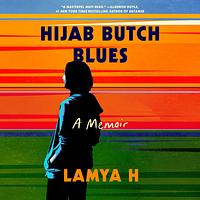Take a photo of a barcode or cover
inspiring
reflective
medium-paced
challenging
emotional
funny
hopeful
inspiring
reflective
medium-paced
adventurous
challenging
emotional
funny
hopeful
informative
inspiring
reflective
tense
medium-paced
emotional
hopeful
reflective
inspiring
reflective
medium-paced
emotional
inspiring
reflective
medium-paced
any queer with religious trauma can relate to this. beautifully written
emotional
hopeful
inspiring
reflective
medium-paced
informative
inspiring
reflective
medium-paced
There a number of assumptions when it comes to religion in this day and age, especially in the US. It’s more “in vogue” to be somewhat atheistic in learned circles, with a slight disdain on those who participate in religion. There is a persistent belief on the incompatibility of religion and queerness. This memoir calls all of these out all of these assumptions, and humbled me in showing how you can be queer, leftist, *and* religious. It particularly went in depth in how you can square away being devoutly Muslim and queer. For all of these, this memoir is worth your time.
In addition to the religion lens, I really appreciated how Lamya touching on the expectations of what it means to be queer in white liberal spaces. Often this means areligious, being completely out in all aspects of your life, and participating in certain activities and events (ex. clubbing). If you go against any of these norms, are you even truly authentically yourself, truly living your best queer life?
My main quibble with this book is that it couldn’t seem to decide what it wanted to emphasize. Did it want to focus on Lamya’s queerness vis a vis her religion? Or was it going to be a memoir about being religious and brown overall? There were elements of both, which I appreciated, but the inclusion of the latter often felt like an afterthought and therefore somewhat shallow. I LOVED those discussions - being foreign-born in the US, how religion is viewed in apparently liberal spaces, microaggressions Lamya has to contend with - but I wanted more than what she was giving. And while it certainly gave us a more well-rounded picture of Lamya’s experience, I would have rather she didn’t include these pieces, and instead have her spend more time talking about her religion and being queer. Notably, I would have preferred that she spend more time exploring the at times toxic and exclusionary expectations in queer subculture ex. clubbing, looking a certain way, “living authentically”, etc.
Still, I found this memoir engaging, nuanced, and thoughtful. It’s worth reading to explore how religion and queerness *can* intersect and co-exist.
emotional
informative
reflective
medium-paced
challenging
emotional
inspiring
medium-paced







